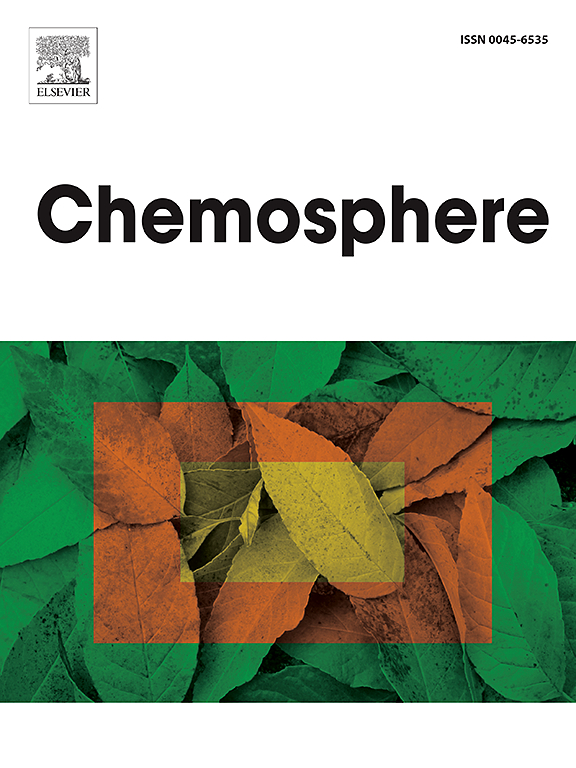Pyrolysis-GC/MS calibration for environmental quantification of tire tread: Standards and marketplace averaged elastomer subunit profiles
IF 8.1
2区 环境科学与生态学
Q1 ENVIRONMENTAL SCIENCES
引用次数: 0
Abstract
Pyrolysis-gas chromatography-mass spectrometry (Py-GC/MS) enables quantification of tire and road wear particles (TRWP) in environmental matrices, but method refinements are needed to account for elastomer subunit variations. Environmentally distributed elastomers are a composite of formulations from many tire manufacturers, which can be represented by specially prepared reference materials. Thus, this study analyzed cryogenically milled tire tread (CMTT) composite materials blended from United States and European Union market-representative tire mixtures to determine operationally defined styrene (St) and 1,4-butadiene (Bt) monomer subunit content fractions in synthetic rubber (SR) fractions. Bootstrap resampling with least squares optimization revealed similar Bt (0.64–0.73) and St (0.06–0.09) contents across market composites, though precision decreased with larger particle sizes. Calibration polymer solutions stored at 4 °C maintained stability for three months, with response ratio changes below 15 %. Although alternative internal standards were evaluated, structural similarity between target and calibration polymers proved essential for complex environmental matrices, with up to 20 % quantitation differences observed when using dissimilar standards. This study demonstrates that market-representative composite CMTT materials provide operationally-defined elastomer subunit profiles that account for commercial variability in tire formulations. This approach enables accurate environmental TRWP quantification without requiring individual elastomer characterization.

轮胎胎面环境量化的热解-气相色谱/质谱校准:标准和市场平均弹性体亚单位剖面
热解-气相色谱-质谱法(Py-GC/MS)可以量化环境基质中的轮胎和道路磨损颗粒(TRWP),但需要改进方法来解释弹性体亚基的变化。环境分布式弹性体是由许多轮胎制造商的配方合成的,可以用专门制备的参考材料来表示。因此,本研究分析了来自美国和欧盟市场代表性轮胎混合物的低温研磨轮胎胎面(CMTT)复合材料,以确定合成橡胶(SR)馏分中可操作定义的苯乙烯(St)和1,4-丁二烯(Bt)单体亚基含量分数。采用最小二乘优化的Bootstrap重采样显示,不同市场复合材料的Bt(0.64-0.73)和St(0.06-0.09)含量相似,但精度随着颗粒尺寸的增大而降低。在4℃下储存的校准聚合物溶液保持稳定三个月,响应比变化低于15%。尽管评估了可选的内部标准,但事实证明,对于复杂的环境基质,目标聚合物和校准聚合物之间的结构相似性是必不可少的,当使用不同的标准时,观察到的定量差异高达20%。这项研究表明,具有市场代表性的复合CMTT材料提供了可操作定义的弹性体亚基剖面,可以解释轮胎配方的商业变化。这种方法可以实现准确的环境TRWP量化,而不需要单独的弹性体表征。
本文章由计算机程序翻译,如有差异,请以英文原文为准。
求助全文
约1分钟内获得全文
求助全文
来源期刊

Chemosphere
环境科学-环境科学
CiteScore
15.80
自引率
8.00%
发文量
4975
审稿时长
3.4 months
期刊介绍:
Chemosphere, being an international multidisciplinary journal, is dedicated to publishing original communications and review articles on chemicals in the environment. The scope covers a wide range of topics, including the identification, quantification, behavior, fate, toxicology, treatment, and remediation of chemicals in the bio-, hydro-, litho-, and atmosphere, ensuring the broad dissemination of research in this field.
 求助内容:
求助内容: 应助结果提醒方式:
应助结果提醒方式:


